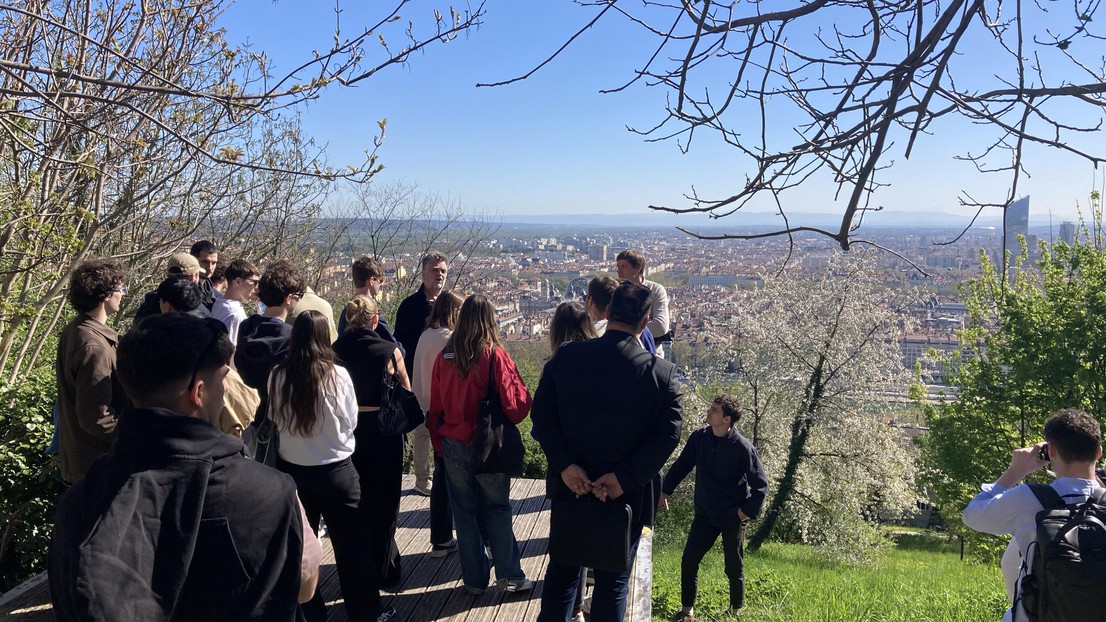Study trip to Lyon

Campus ECAM, Colline de Fourvière, Lyon © EPFL / LAST
The studio of Prof. Emmanuel Rey of the Laboratory of Architecture and Sustainable Technologies (LAST) went this year on a study trip to Lyon, France. This extramural teaching activity offered the students the chance to visit architectural projects from different historical periods, highlighting the spatial and constructive opportunities offered by the urbanity in the slope. These various themes resonate with the issues directly addressed in the RELIEFS URBAINS studio.
Architectural design is expected to play a central role in the search for alternatives to reorient urban development inwards through densification strategies. Using an approach at different scales, LAST's studio aims precisely at analyzing, exploring, and experimenting with the specific issues of this contribution of architecture to the resilient regeneration of urban areas.
The study trip to Lyon was conceived in this spirit, with the objective of allowing the students to broaden their knowledge in terms of architectural references. It was an opportunity to visit many of the city's most emblematic projects, from recent developments in the Confluence neighborhood – following Herzog & de Meuron’s masterplan – to the Théâtre Antique and Vieux-Lyon. The tours also included visits to the Croix-Rousse hillside and the Gratte-Ciel neighborhood of Villeurbanne. Urban strolls sequenced by funicular railways, public staircases and traboules allowed students to experiment with sustainable mobility practices adapted to the slope.
The study trip was also marked by a number of enriching encounters, such as the various guided tours led by architects Alice Fakhri (Insolites Architectures), Philip Bürgi (BASE), Philippe Beaujon (Vurpas Architectes), and the Nomade Land, and Soierie Vivante associations, which highlighted the city's unique spirit.
Finally, the trip ended with a short stay at the Sainte-Marie de La Tourette convent, built in 1960 by Le Corbusier - listed as a UNESCO World Heritage Site - to discover a building that is emblematic of modernity, precisely inscribed in a sloping site.
These multiple approaches helped to put into perspective issues of conceptual coherence, built morphology, spatiality, materialization, and expression with broader themes related to the urban mutation processes that most European urban regions are experiencing today.